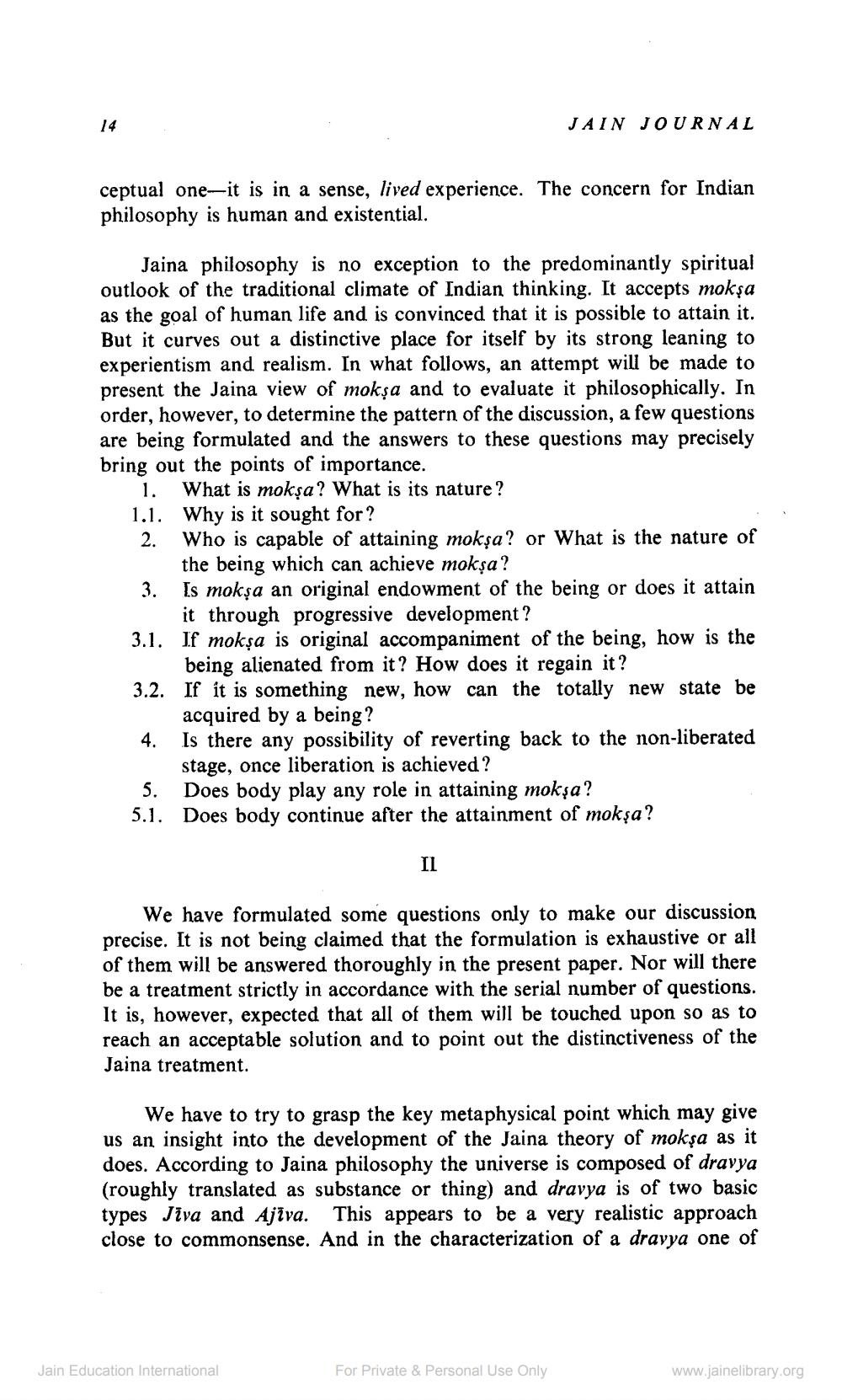________________
JAIN JOURNAL
ceptual one-it is in a sense, lived experience. The concern for Indian philosophy is human and existential.
Jaina philosophy is no exception to the predominantly spiritual outlook of the traditional climate of Indian thinking. It accepts mokşa as the goal of human life and is convinced that it is possible to attain it. But it curves out a distinctive place for itself by its strong leaning to experientism and realism. In what follows, an attempt will be made to present the Jaina view of mokşa and to evaluate it philosophically. In order, however, to determine the pattern of the discussion, a few questions are being formulated and the answers to these questions may precisely bring out the points of importance.
1. What is mokşa? What is its nature? 1.1. Why is it sought for? 2. Who is capable of attaining mokşa? or What is the nature of
the being which can achieve mokşa? 3. Is mokṣa an original endowment of the being or does it attain
it through progressive development ? 3.1. If moksa is original accompaniment of the being, how is the
being alienated from it? How does it regain it? 3.2. If it is something new, how can the totally new state be
acquired by a being ? 4. Is there any possibility of reverting back to the non-liberated
stage, once liberation is achieved ? 5. Does body play any role in attaining mokşa? 5.1. Does body continue after the attainment of mokşa?
We have formulated some questions only to make our discussion precise. It is not being claimed that the formulation is exhaustive or all of them will be answered thoroughly in the present paper. Nor will there be a treatment strictly in accordance with the serial number of questions. It is, however, expected that all of them will be touched upon so as to reach an acceptable solution and to point out the distinctiveness of the Jaina treatment.
We have to try to grasp the key metaphysical point which may give us an insight into the development of the Jaina theory of mokșa as it
5. According to Jaina philosophy the universe is composed of dravya (roughly translated as substance or thing) and dravya is of two basic types Jiva and Ajīva. This appears to be a very realistic approach close to commonsense. And in the characterization of a drayya one of
Jain Education International
For Private & Personal Use Only
www.jainelibrary.org




